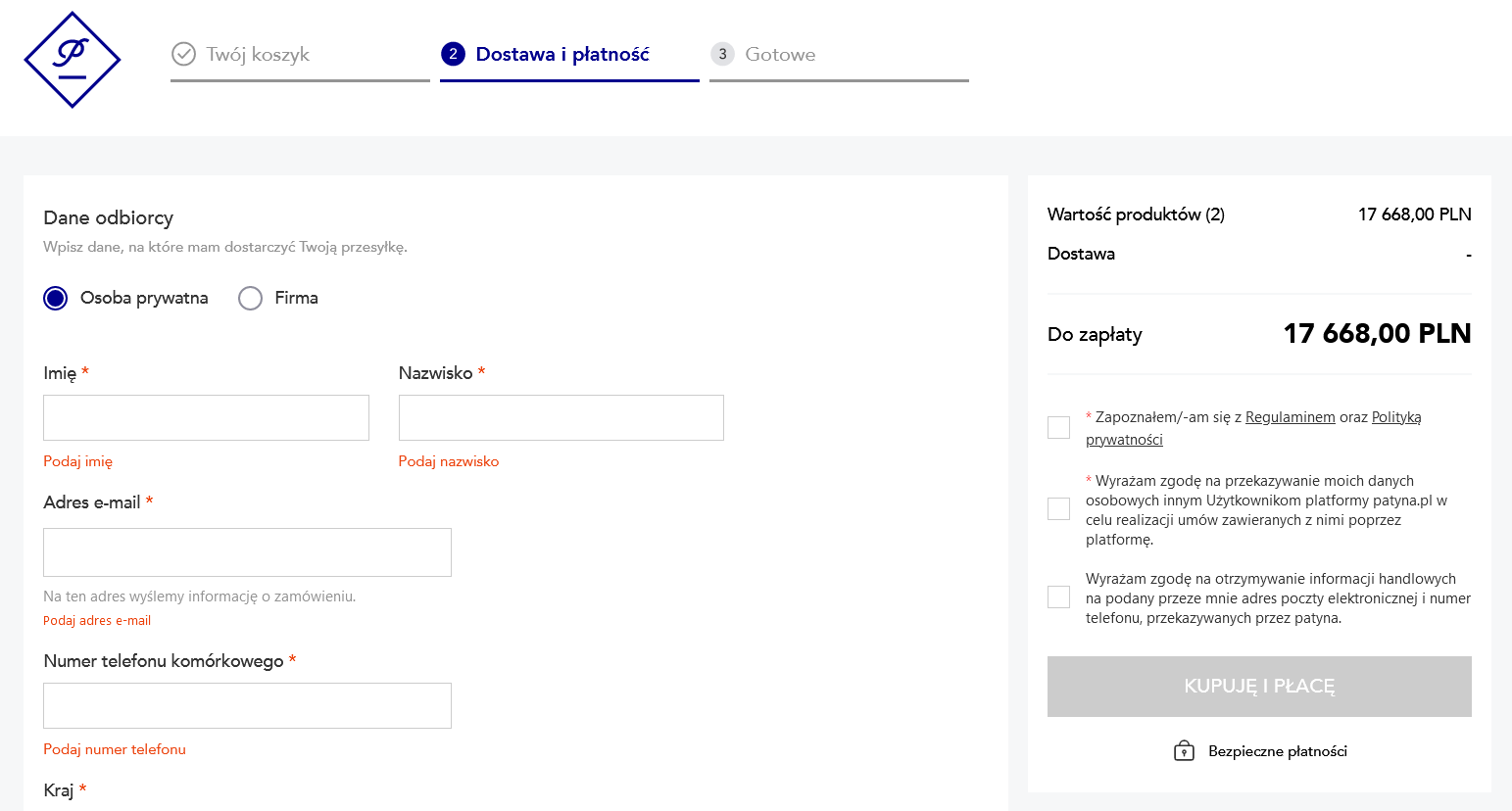Case study - Revolutionizing Patyna: from WooCommerce to Headless eCommerce in Medusa.js
Patyna, the biggest polish vintage marketplace, transitioned from a limiting WooCommerce platform to a dynamic headless eCommerce solution, enhancing scalability, performance, and user experience.
- Client
Patyna
- Year
2023
- Technology
Medusa.js
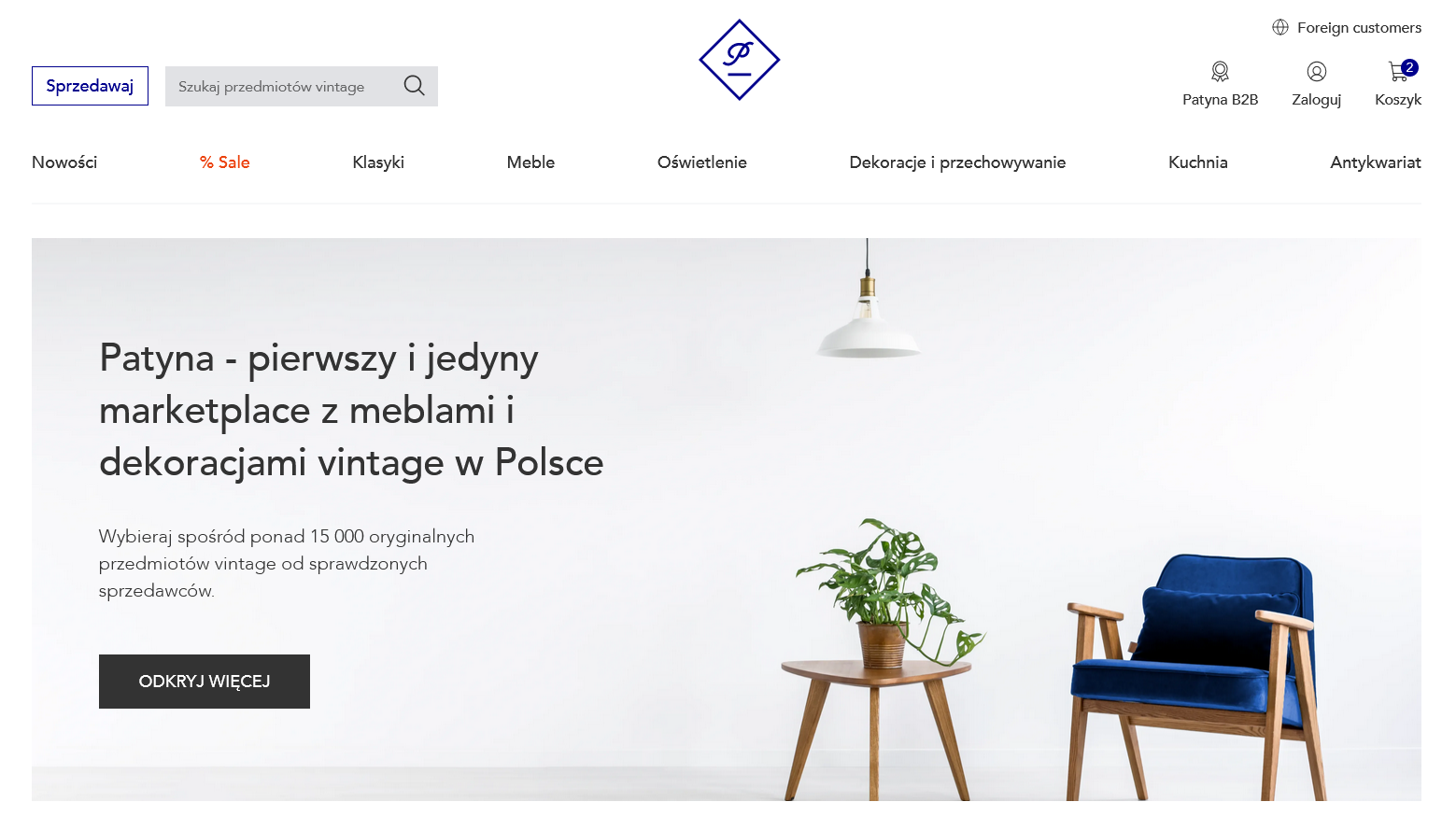
Client
Patyna, a prominent name in the vintage marketplace, has been a go-to destination for thousands of users seeking quality vintage furniture from a vast array of vendors.
Problems
Patyna initially chose WooCommerce as its eCommerce platform. While this solution served its initial needs, as the business scaled, several challenges emerged. The platform's inherent limitations began to hinder Patyna's growth and its ability to meet the expectations of its customers and vendors. Here are the specific issues they faced:
Outdated Infrastructure
The existing WooCommerce setup did not allow for updates through old code changes. This rigidity meant that any necessary modifications or enhancements required a complete overhaul, making the platform increasingly cumbersome to maintain.
Technological Debt
Over time, as temporary fixes and patches were applied to address immediate issues, the platform accumulated a significant amount of technological debt. This debt made it increasingly challenging to introduce new features or make necessary changes, effectively blocking further development.
Performance Issues
The website's long loading times were a significant concern, affecting not just the main site but also the admin and seller panels. Such delays caused user frustration.
Scalability Concerns
WooCommerce was not built to handle the vast inventory that Patyna had accumulated. With over 30K products and a growing vendor base, the platform struggled to provide a seamless environment that could scale with the business's needs.
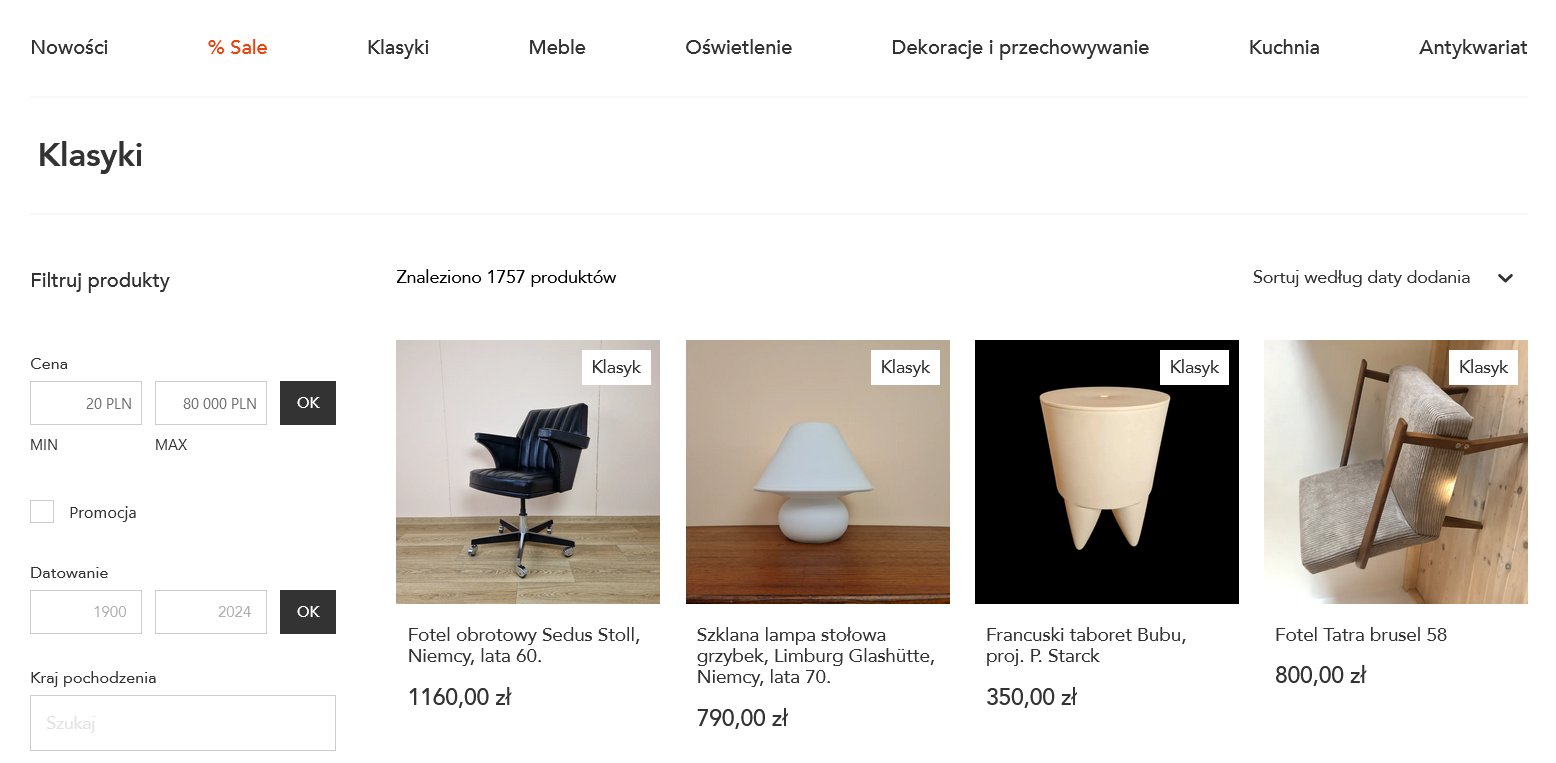
Challenge
The journey of transitioning Patyna from its existing WooCommerce setup to a headless eCommerce solution was fraught with challenges. The primary goal was not just to migrate but to enhance the platform in every possible way.
SEO Migration
With a significant amount of organic traffic, it was imperative to ensure that the migration did not negatively impact the platform's search engine rankings. This required meticulous planning and execution to retain the SEO value.
Data Migration
One of the most daunting tasks was the migration of over 30,000 products and 2,000 vendors from WooCommerce to Medusa. This wasn't just about moving data; it was about ensuring data integrity, consistency, and accuracy in the new system.
Custom Functionalities
The generic features of most eCommerce platforms wouldn't suffice for Patyna's unique requirements. Custom functionalities like a comprehensive reporting system were essential for administrators to gain insights and make data-driven decisions.
Scalability Concerns
With a rapidly expanding product base and vendor list, one of the primary challenges was ensuring the new platform could handle this growth without compromising on performance. The previous system had shown signs of strain, and the new solution needed to be robust enough to manage future expansions seamlessly.
Streamlined Vendor Management
Managing over 2,000 vendors is no small feat. The platform required a system that could handle the complexities of such a vast vendor base, from onboarding to product listing and order management.
Flexibility for Future Growth
The digital world is ever-evolving, and the platform needed to be adaptable. This meant ensuring that any future integrations, features, or changes could be implemented without major overhauls.
Performance Enhancement
The previous WooCommerce setup had significant performance issues, affecting both the user experience and the efficiency of the admin and seller panels. Addressing these performance bottlenecks was crucial to ensure smooth operations and a positive user experience.
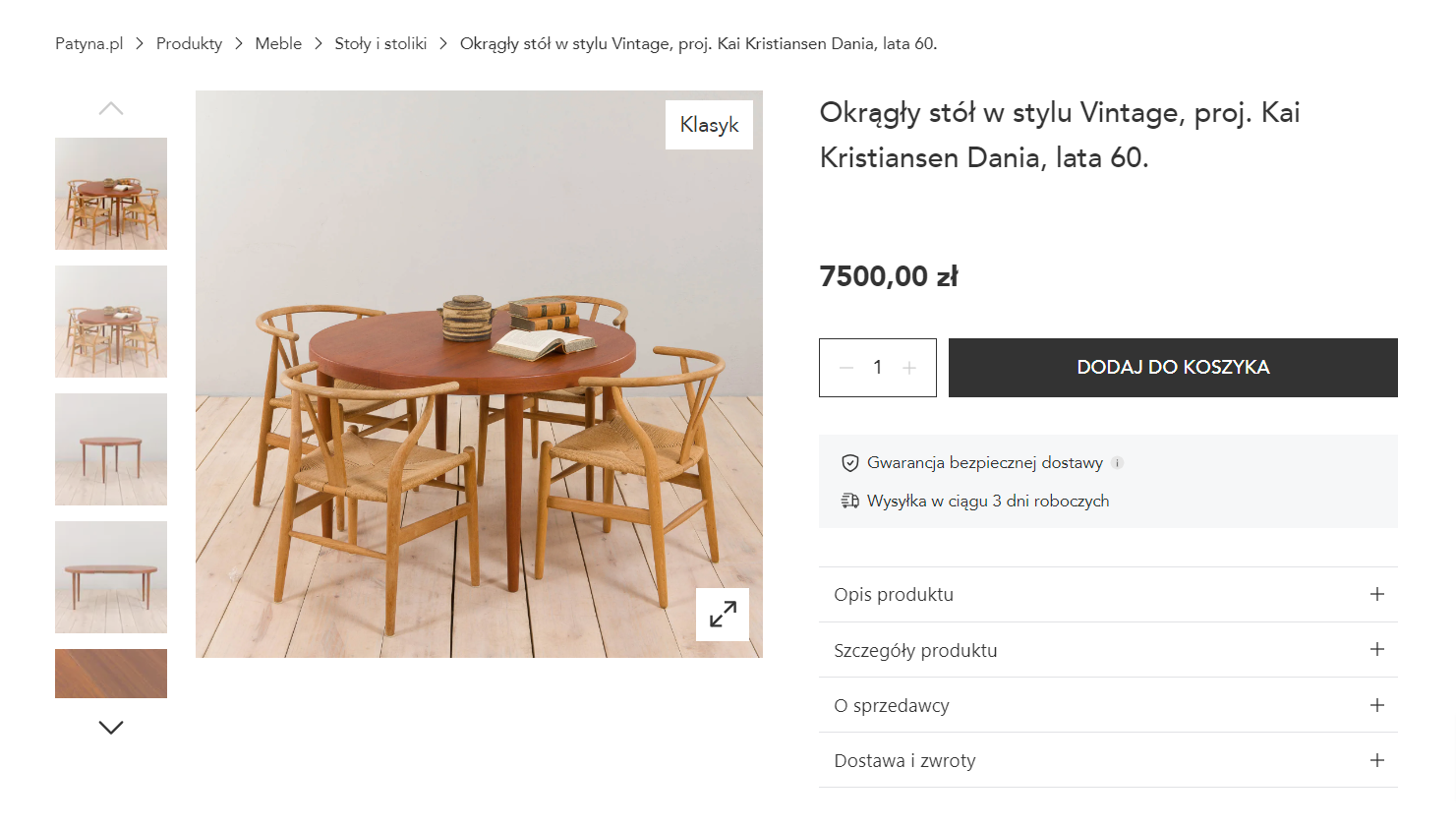
Solution
The development of eCommerce technology is evolving and to remain competitive, companies must adapt. One of the breakthrough changes in eCommerce is the transition to headless architecture.
Why Headless eCommerce?
Traditional eCommerce platforms have a frontend (what the user sees) tightly coupled with the backend (where data is stored and managed). This rigid structure can limit flexibility and innovation. Headless eCommerce decouples these two components, allowing for more agility and customization.
The Role of Medusa.js and Next.js
Medusa.js and Next.js are at the forefront of the headless revolution. Medusa.js offers a flexible eCommerce backend structure, ensuring that the platform can be easily adapted to all business models. On the other hand, Next.js provides a solid framework for the frontend, ensuring a responsive and user-friendly interface.
Initial Assessment and Planning
Before diving into the technicalities, a comprehensive assessment was conducted to understand the specific needs of Patyna. This involved understanding the existing WooCommerce setup, identifying pain points, and charting out a roadmap for the migration.
Data Migration
Transferring over 30,000 products and details of more than 2,000 vendors is no small feat. A dedicated script was written to ensure a smooth transition from WooCommerce to Medusa.js, ensuring data integrity and consistency.
Flexibility with Next.js
The user interface is the first point of interaction for any online platform. Using Next.js, a fresh, intuitive, and responsive design was crafted.
Backend Power with Medusa.js
Medusa.js was tailored to fit the multi-vendor business model of Patyna. From managing vast product listings to handling intricate vendor details, Medusa.js provided a robust and scalable solution.
Content Management with Strapi
Strapi was chosen as the headless CMS, offering flexibility in content management and seamless integration with the platform.
Ensuring Scalability: Vercel & DigitalOcean Deployment
To guarantee optimal performance and scalability, the platform was deployed on trusted cloud infrastructures: Vercel and DigitalOcean.
PayU Integration for Smooth Payments
To improve shopping experience, we have developed integration with the payment provider PayU. This solution ensured a smooth and secure payment process.
Custom Functionalities
Understanding the unique challenges and requirements of Patyna, several custom functionalities were introduced:
-
Advanced Filtering: With a vast product base, helping users find what they need was paramount. Advanced filtering options were introduced, allowing users to narrow down their choices based on various criteria.
-
Reporting System: To aid vendors in understanding their sales, a custom reporting system was introduced. This provided insights into sales patterns, popular products, and more.
-
One Order, Many Vendors: We have developed a unique order spliting system. This means that when a customer orders products from multiple sellers, the order is split, ensuring that each seller only manages their part of the order.
-
Vendor Panel Upgrades: TWe have built an intuitive seller panel, enabling sellers to easily add products, manage store information and efficiently process orders.
-
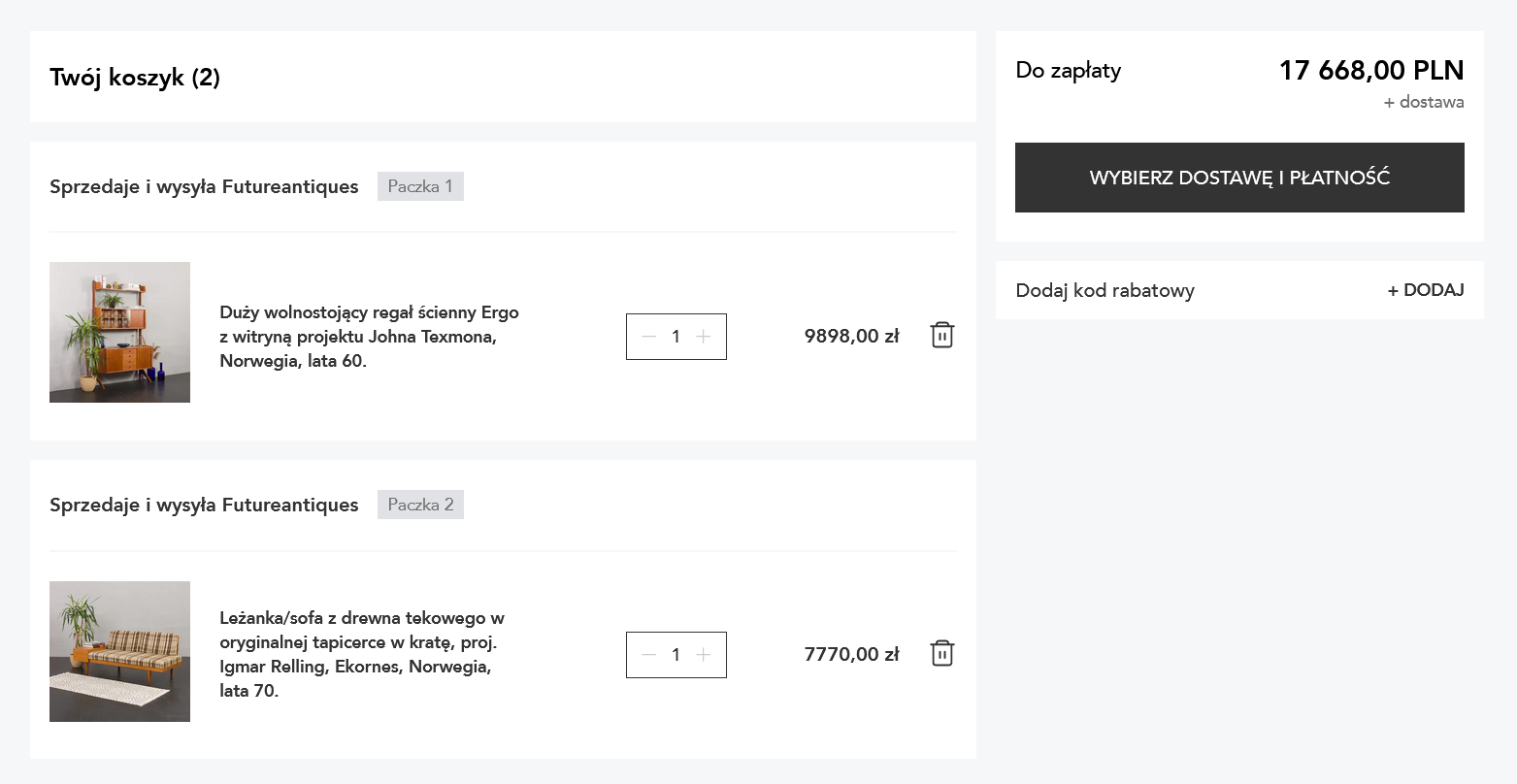
Results
Patyna's eCommerce transformation involves technological improvements, better meeting the needs of its large user base, and ensuring a seamless shopping experience.
Performance Boost
The migration reduced the time to market for new features by 30%, which allows for faster adaptation to customer requirements and market trends.
After moving to a headless platform, time spent on maintenance and debugging was reduced by 50%. Thanks to this, the Patyna team can now devote more time to developing and improving the platform, instead of focusing on solving technical problems.
What's more, there was also a 34% increase in traffic just 2 months after migration. This result was achieved thanks to SEO optimization in Next.js.
Enhanced Search & Filters Functionality
Navigating through a vast catalog of over 30,000 products can be daunting. However, the revamped platform provided users with an advanced search mechanism coupled with intuitive filters, simplifying product discovery.
Streamlined Checkout Process
The user journey, from product selection to final purchase, was made more intuitive. The integration of the PayU payment gateway ensured transactions were both smooth and secure, enhancing user trust.
Positive User Feedback
The feedback post-migration was a testament to the project's success. Comments like "I will add much more product to the new platform because it is pleasure now" and "After a long time not using your platform I will start to use it again" highlighted the platform's enhanced usability and performance.
